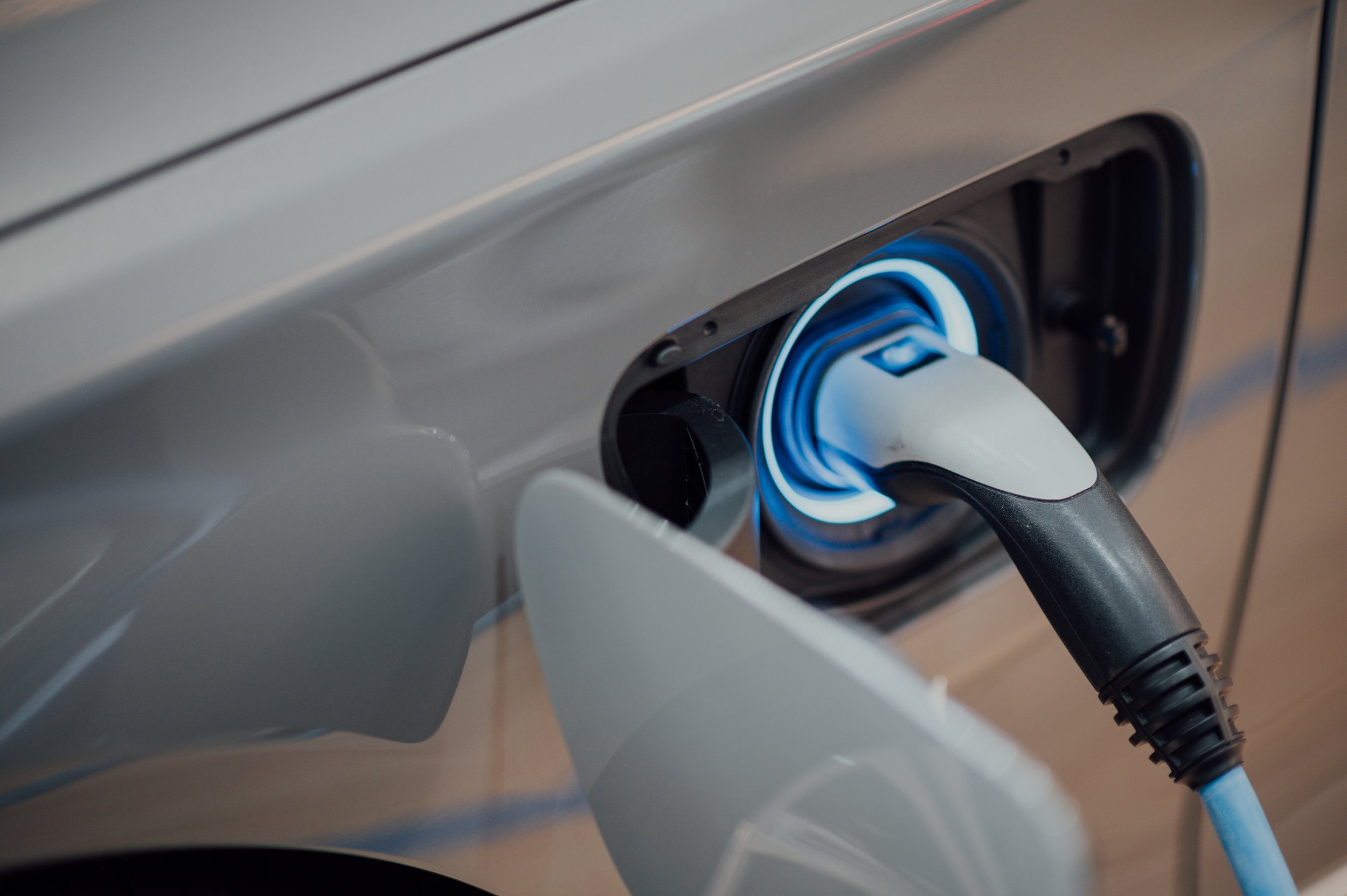
EV’s - Powering Business or a Commercial Shock?
MAY 2022
One of the services that we offer at Overland Odyssey is a consultancy-fleet strategy service, whereby; we offer commercial clients impartial advice in regards to implementing and managing a fleet replacement strategy for their current ICE (Internal Combustion Engine) fleet vehicles with BEV (Battery Electric Vehicles) and/or hybrid commercial vehicles. In our experience, clients have approached us for advice in this particular area for a wide variety of reasons, but mainly it seems to be external pressures upon their businesses put on them by future Government policies and the ever increasing promises made by leading vehicle manufacturers about the fore coming decade. The larger the business and the more Government contracts that they carry out, the more pressure they seemingly come under to be seen actively making positive steps towards lowering their ‘carbon footprint’ - which includes the way in which their staff and products are transported both locally and internationally.
“Progress for the sake of progress must be discouraged..”
One Step Forward, Two Steps Back?
At Overland Odyssey, it may be pretty obvious that we have a bit of an obsession with motorised vehicles and for us, this by no means excludes the use of electric-powered vehicles. The instant torque and sheer acceleration provided by these modern BEV’s, accompanied by the strange lack of engine soundtrack, replaced by motor whine and tyre roar is enough to bring a grin to the face of even the most sour BEV opposing petrol head (or a smirk at the very least!).
So, we like to consider ourselves ‘neutral’ in terms of our stance within the ICE vs BEV debate and we advise all of our clientele purely based upon the most suitable vehicles and equipment to best suit their personal and/or business needs and requirements, whilst attempting to help protect their investment. However, that being said; we by no-means consider ourselves ambassadors for the electric vehicle movement either, as we have our own inhibitions about the current market offerings.
The mainstream agenda for the electric vehicle takeover and ICE vehicle replacement schemes is strongly focused upon the current ‘climate emergency’ and creating a solution for lowering our carbon and emissions output. Now, this remains a highly debated topic with many arguments both for and against; we like to stand on the side of sense and sensibility and ask a simple question, which seems in itself a difficult one to answer; Are BEV’s actually better for the environment at the moment?
Volvo recently carried out a study that compared their C40 Recharge and XC40 ICE range and the amount of CO₂ created for each vehicle production. Now, Volvo are considered one of the leaders at the very forefront of BEV development and production, with a company commitment to phase out all ICE vehicle production within their factories by 2030. Yet, the data that they have recently released seemingly contradicts the need to replace ICE vehicles with BEV’s. Volvo claim that the carbon cost of production of the electric C40 is up to 70% higher than that of their internal combustion-engined XC40 and it could take an average driver up to 90,000 miles and/or 4-6 years before it ‘breaks even’ with its ICE counter-part in terms of carbon footprint/impact. (See Volvo’s full report here)
To us, this seems counter productive; just because the exhaust-end is much cleaner whilst driving on the road, doesn’t mean that the overall process of material production, vehicle manufacturing, charging and the small matter of battery disposal and/or recycling (not included in Volvo’s report) is a better process for the environment in general, which seems a ridiculous thing to ignore and a serious flaw in the current agenda.
Now, don’t get me wrong here… Progress and the evolution of technology, the way in which we move and the way in which a business provides services to customers has, and will continue to adapt and evolve. “Progress is impossible without change, and those who cannot change their minds cannot change anything.” - George Bernard Shaw. However, I always remember a quote from the Harry Potter series in which a certain, highly unlikeable character Dolores Umbridge stated; “Progress for the sake of progress must be discouraged..” this may well be the only sense that this character ever expressed and I feel that it is particularly pertinent whilst we discuss the future of electric vehicles and alternative energy solutions going forward.
Commercially Viable?
Commercial Viability - The ability of a business, product, or service to compete effectively and to make a profit
Financial Considerations
The prospect of scrapping your ICE fleet vehicles for a BEV alternative is a daunting decision at best, add to that the uncertainties of battery range, charging times, available charging points, charging facility installations, battery failures/reliability and general upkeep/maintenance costs - It can become a headache that you never knew you needed to have.
In our opinion, replacing your commercial/business fleet with a BEV alternative is currently not a decision that will ensure the ongoing financial and reliable performance of your day-to-day business vehicular operations…yet.
This obviously remains unique to every business and depends upon many different variables such as; business size, budget, current vehicle stock in terms of size and uses etc.
The initial outlay for a like-for-like commercial BEV compared to a traditional ICE vehicle is a major deciding factor for small businesses - At around £10,000 more for a typical BEV Berlingo type van vs the standard diesel offering, it is understandable why it does not currently seem like a viable option to small business owners. That being said; running costs should be lower in terms of fuel use, but that remains to be seen with increased demand on the national grid and rising energy costs.
Of course, there are Government grant schemes available that try to assist business owners make their transition from the internal combustion engine to a ‘cleaner’ way of driving their business. Assistance schemes vary from initial purchase cost support, to preferential electricity rates etc and eligibility depends upon many various factors about your business, your accounts and the way in which you operate.
“ If you have to ask the price, you probably can’t afford it.”
HGV Viability
The development of all-electric HGV’s has been something that we have been observing with interest over the past few years here at Overland Odyssey. We believe that if manufacturers can ‘crack’ the commercial BEV market and iron out any issues surrounding range and reliability, then it is reasonable to think that this would be a huge step towards making electric vehicles not only a viable option for everyone, but a sound replacement for the internal combustion engined vehicles that we are so used to.
HGV giants DAF have now successfully launched several all-electric HGV models, including both articulated and rigid chassis variants. For distribution operations within city areas, these electric trucks seem like they could be an ideal solution, especially with tougher and tougher road emissions/inner city regulations being brought in every year. Huge businesses such as; Amazon and Tesco have already begun to incorporate these types of trucks into their existing fleets.
The latest batteries support a geographical range that's usually more than sufficient for a day of standard use with up to an advertised 200+ Km’s. Batteries can be charged in as little as 75 minutes from empty to full using a 350kW/400A ‘fleet charger’, which could work well for ‘shuttle’ operations from depo to depo, meaning the trucks could be charged whilst the trailer or body is loaded and unloaded. Of course these figures provided by DAF and other manufacturers come alongside the usual clause; *Depending on the application, driving circumstances and load.
The price tag on these new electric variants seems to be elusive and may well be along the lines of the Rolls Royce factory saying of “If you have to ask the price, you probably can't afford it.” I think it pretty obvious that these trucks are not going to give you your traditional ‘bang for your buck’ that you may well expect from their diesel brethren, and the likelihood of seeing these trucks on the road in 10 years time with half a million to a million miles on the clocks, looks pretty slim to us.
Overall I think this boils down to the same conclusion as for the current smaller commercial vehicle offerings; for large businesses such as Amazon, who are under expediential pressures from both public and Government to be seen to make change, then it is a welcome addition to the fleet, with little to no-impact upon their annual finances.
For everybody else however; well, that’s where things remain unrealistic.
Electrifying Your Business, Without the Shock..
Electric cars and vehicles are currently earmarked as the future of motorised transport, which they certainly already are for some. With multiple industry giants and entrepreneurs such as Elon Musk desperately racing to find the perfect solution, it is with inevitability that the shape of motoring as we know it is on the cusp of a dramatic change. What form this new way of motoring will take, is still anybody’s guess; with the likes of Elon and JCB chasing hydrogen, the announcement of new battery technologies such as the Nano Diamond Battery, which could see the repurposing of nuclear waste in their production, also seem to be competitive and promising alternatives.
We feel that with the current available technology on offer and the eco-vehicle manufacturing race, it could be a high risk investment of your hard-earned into what could effectively play out as a ‘fad’ technology phase, which could be defunct within a matter of a few years of production/purchase. Which of course, could be a huge financial hit should your business implement ICE replacement initiatives, install charging points at depos etc. Currently we advise all of our clients wishing to future-proof their fleet operations, to develop a calculated strategy to ‘phase’ the replacement of their ICE fleet with an ‘eco-alternative’ with a predicted implementation start date beginning in 2025.
However, should your company be under pressure from external sources or you are just passionate about this next step in motoring and wish to play your part in the development and evolution of the technology, there are of course suitable alternatives that, given the right conditions, could make great additions to your corporate fleet that will also make a strong statement about your company and the way in which it conducts business, it’s modern outlook and the consideration of it’s environmental impact. With this outlook in mind, we advise that your business adopts an annual vehicle trade-in/upgrade scheme, whereby these eco-alternatives are replaced annually to ensure that you remain at the forefront of vehicle development, whilst hopefully minimising any financial loss due to obsolete technologies.
“Give me six hours to chop down a tree and I will spend the first four sharpening the axe”
Every business will have their own road-map, unique goals, strategies and requirements, which determines how and where BEV’s might be utilised within a company to ensure the best results are achieved in terms of financial and operational performance. However, the bottom-line remains the same across all businesses whenever considering the adoption of any new technology or replacing existing tried and tested methods - Proper planning and effective, efficient implementation.




